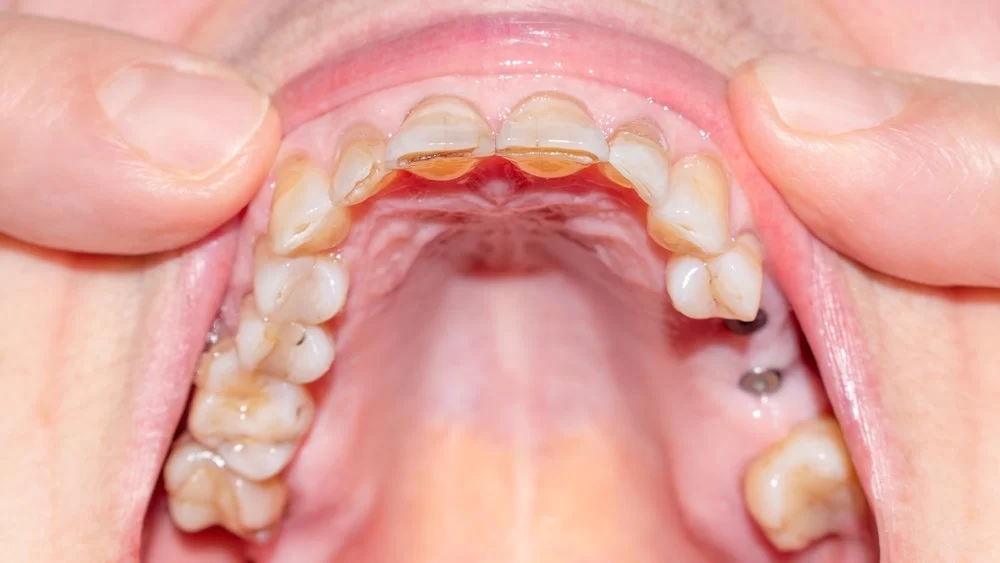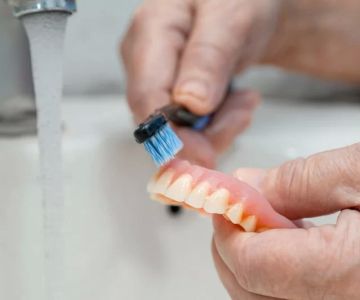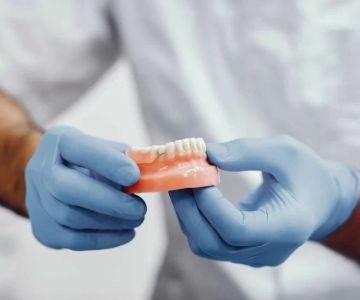
What to Do If You Have an Exposed Nerve in a Tooth? Immediate Care and Treatment Options
- What is an Exposed Nerve in a Tooth?
- Symptoms of an Exposed Nerve in a Tooth
- Immediate Relief for Exposed Nerve Pain
- Treatment Options for Exposed Nerve in a Tooth
- When to See a Dentist for an Exposed Nerve
What is an Exposed Nerve in a Tooth?
An exposed nerve in a tooth is a dental issue that occurs when the protective enamel or gum tissue around the tooth is damaged, exposing the sensitive nerve inside. This can happen due to cavities, gum recession, trauma to the tooth, or enamel erosion. The exposed nerve is extremely sensitive, often causing sharp pain, especially when consuming hot, cold, or sweet foods and beverages.
Exposed nerves in teeth are serious and can lead to further complications if not treated properly. The nerve can become infected, which might result in more intense pain and even the need for a root canal if left untreated.
Symptoms of an Exposed Nerve in a Tooth
The symptoms of an exposed nerve in a tooth are unmistakable, and they typically include:
- Sharp or Sudden Tooth Pain: This can happen when eating or drinking something cold, hot, or sweet.
- Sensitivity: The tooth becomes more sensitive to temperature changes or pressure.
- Visible Damage to the Tooth: You may notice visible chips, cracks, or decay in the tooth.
- Discomfort in the Gums: The surrounding gum area may become inflamed or swollen if there is an infection near the exposed nerve.
If you notice any of these symptoms, it's important to take immediate steps to manage the pain and prevent further damage to the exposed nerve.
Immediate Relief for Exposed Nerve Pain
If you are experiencing the intense pain of an exposed tooth nerve, here are a few things you can do to help manage the discomfort temporarily:
- Use Over-the-Counter Pain Relievers: Non-steroidal anti-inflammatory drugs (NSAIDs), such as ibuprofen, can help alleviate pain and reduce inflammation.
- Avoid Cold and Hot Foods: Avoid consuming food or drinks that are too hot or cold, as these can trigger sharp pain from the exposed nerve.
- Use Desensitizing Toothpaste: Sensitive teeth toothpaste can sometimes help numb the area around the exposed nerve and reduce discomfort.
- Salt Water Rinse: Gently rinse your mouth with warm salt water to help reduce swelling and clean the area.
- Apply Clove Oil: Clove oil has natural numbing properties and can be applied directly to the painful area for temporary relief.
While these steps can provide temporary relief, they are not long-term solutions, and it's important to see a dentist as soon as possible for proper treatment.
Treatment Options for Exposed Nerve in a Tooth
Treatment for an exposed nerve in a tooth will depend on the severity of the exposure and the underlying cause. Some of the most common treatments include:
- Dental Fillings: If a cavity or decay has caused the nerve exposure, a dental filling can be used to seal the tooth and protect the nerve.
- Dental Crowns: If the tooth is severely damaged, a dental crown may be placed to cover and protect the exposed nerve, preventing further damage.
- Root Canal Treatment: If the nerve is infected or the pain is too severe, a root canal may be necessary to remove the infected tissue and seal the tooth.
- Gum Grafting: If gum recession is the cause of the nerve exposure, gum grafting surgery may be recommended to restore gum tissue around the tooth.
Your dentist will determine the best treatment option based on the extent of the nerve exposure and the condition of the tooth.
When to See a Dentist for an Exposed Nerve
If you suspect you have an exposed nerve in a tooth, it's crucial to see a dentist as soon as possible. Ignoring the problem or attempting to treat it on your own can lead to more serious complications, including tooth infection, abscesses, or even tooth loss.
If you experience severe pain, swelling around the tooth, or notice that the tooth is becoming loose, contact your dentist immediately. In some cases, an emergency dental visit may be necessary to address the issue promptly and prevent further damage.
If you're dealing with the pain of an exposed nerve, it's important to seek professional care. At Dentistry Toothtruth, we offer expert dental advice and treatment options to address tooth nerve issues and prevent further complications. Explore our range of dental products designed to support your oral health and help relieve discomfort from exposed nerves.







 Gessel Orthodontics5.0 (565 review)
Gessel Orthodontics5.0 (565 review) Metro Dentalcare Specialty Center Maple Grove - Oral Surgery4.0 (327 review)
Metro Dentalcare Specialty Center Maple Grove - Oral Surgery4.0 (327 review) Steve Baerg, DDS5.0 (10 review)
Steve Baerg, DDS5.0 (10 review) TLC Dental Center4.0 (244 review)
TLC Dental Center4.0 (244 review) Dr. Susan E. Henrickson, DMD, FAGD0.0 (0 review)
Dr. Susan E. Henrickson, DMD, FAGD0.0 (0 review) Dr. Maha Blaibel, DDS5.0 (6 review)
Dr. Maha Blaibel, DDS5.0 (6 review) The Importance of Oral Health Education During Pregnancy for a Healthy Pregnancy
The Importance of Oral Health Education During Pregnancy for a Healthy Pregnancy Best Tips for Brushing Your Teeth Properly for Healthy Gums: Essential Techniques for Oral Health
Best Tips for Brushing Your Teeth Properly for Healthy Gums: Essential Techniques for Oral Health Why Skipping Dental Checkups Can Lead to Bigger Oral Health Problems
Why Skipping Dental Checkups Can Lead to Bigger Oral Health Problems Advantages of Porcelain Dental Restorations
Advantages of Porcelain Dental Restorations How Can Diabetes Cause Tooth and Gum Problems? Preventing and Managing Oral Health Issues
How Can Diabetes Cause Tooth and Gum Problems? Preventing and Managing Oral Health Issues Healthy Habits for Promoting Good Oral Health and Hygiene: Tips for a Healthy Smile
Healthy Habits for Promoting Good Oral Health and Hygiene: Tips for a Healthy Smile